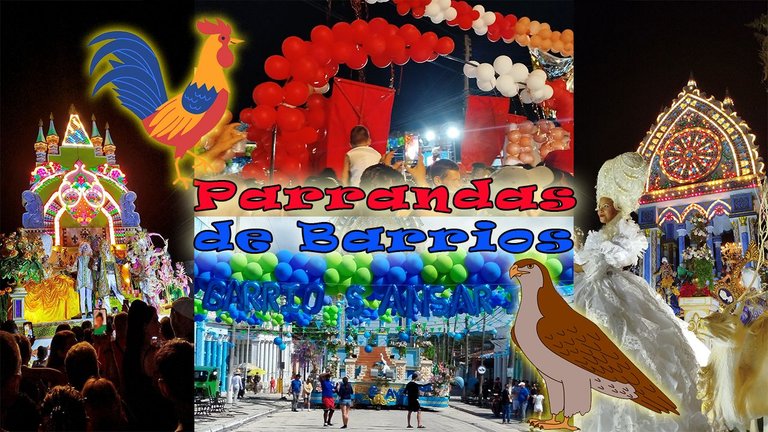
Las calles de Yaguajay se llenaron de toques de tambores, el sonido metálico de las gangarrias y las trompetas. Los más entusiastas se sumaron a bailar detrás de la conga. El cielo se llenó de las luces de fuegos artificiales y el tronar de las explosiones pirotécnicas. Una mitad del pueblo se vistió de rojo y la otra de azul. El gallo y el gavilán volvieron a enfrentarse. Regresaron las parrandas de barrios, festejo que forma parte de la identidad cultural de esta región de Cuba.
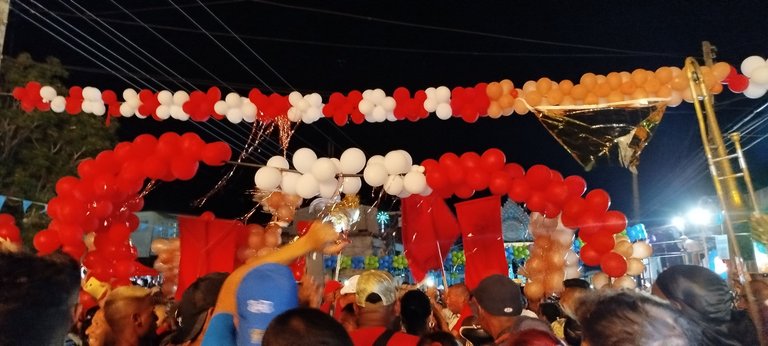
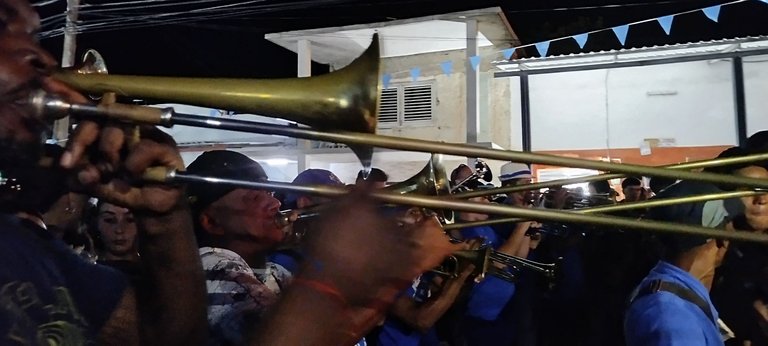
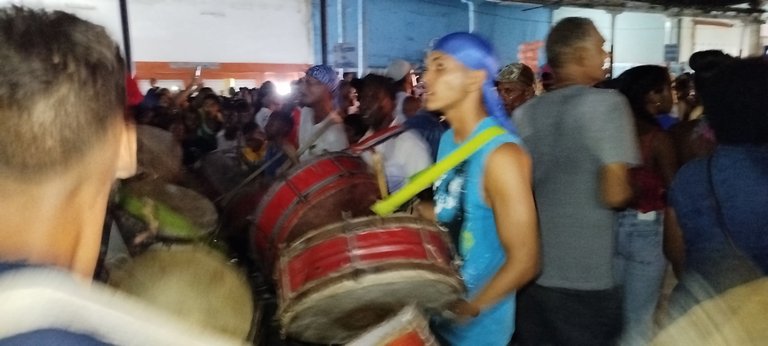
Un poco de historia
Las parrandas de barrios son fiestas tradicionales de Cuba. Sus raíces están relacionadas con la religión católica que trajeron los españoles a la isla. A un sacerdote se le ocurrió la idea de convocar a unos muchachos para que salieran a las calles de la villa haciendo sonar instrumentos musicales y de esta forma despertar a los feligreses para que asistieran a la misa del Gallo. Su origen se ubica en el poblado de San Juan de los Remedios, lugar donde hasta nuestros días, cada año, en vísperas de Navidad, se celebra el festejo. La tradición fue extendiéndose con el tiempo a los pueblos vecinos ubicados fundamentalmente al norte de la región central de Cuba.
Las parrandas dividen a los poblados en dos barrios que se enfrentan en una competencia donde no se decreta ningún vencedor, al menos oficialmente, pues para los seguidores de cada bando, no hay duda alguna, de quien es el ganador. Tal es la pasión, que miembros de una misma familia pueden "romper relaciones" por el tiempo que duren los festejos por ser simpatizantes de bandos diferentes. Cada barrio, además de identificarse por su nombre, se distingue también por un color y una mascota (gallos vs. gavilanes, sapos vs. chivos, aura vs. pitirre)
Se compite en comparsas, congas, estandartes, trabajos de plaza, fuegos artificiales y por supuesto el plato fuerte de la fiesta: las carrozas. Estas son obras de fantasía que recrean temas diversos relacionados con historias y leyendas de cualquier región del mundo. Así podemos encontrar una representación de las Mil y una noches árabes, el esplendor del imperio romano o la historia de Moctezuma. El tema y los elementos que conforman las carrozas se guardan con celo hasta el momento de la presentación.
El día de la definición, las carrozas se armaban a una distancia prudencial de “la raya” - línea imaginaria que divide a la localidad en los dos barrios. Si alguno de los dos barrios no está listo a la hora pactada para la presentación, su derrota se decreta de oficio. Mientras llega ese momento, el ambiente se anima con la música de las congas, comparsas, farolas, fuegos artificiales y el entusiasmo desbordado del pueblo. Esa es la única fiesta que saca de sus casas a todas las personas sin distinción de edades.
Al siguiente día cada barrio corre su triunfo, se entierra al contrario y se ostentan los logros que le llevaron al éxito. Al final el gran ganador es el pueblo que goza de las fiestas y mantiene vivas las tradiciones que lo identifican.
Las parrandas de barrios, que ya cuentan con dos siglos de existencia, fueron declaradas por la UNESCO, en 2018, Patrimonio Inmaterial de la Humanidad. Aunque la lista oficial incluye 18 poblados de la región del centro-norte de Cuba, otros también merecen ser incluidos.
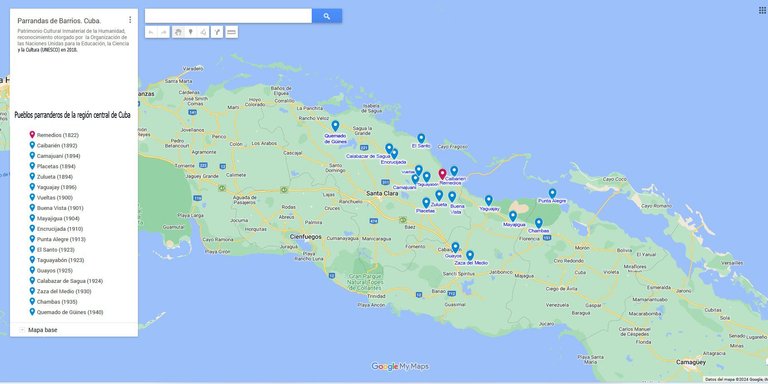
Captura de pantalla de Google Maps editada en Photoshop
El arraigo de la tradición
Por estos días, después de algunos años sin celebrarse, regresaron las parrandas de barrios a Yaguajay, lugar donde vivo. Es justo destacar que este poblado se cuenta entre los primeros que hicieron suya esta tradición popular en Cuba. Aquí hubo parranderos que se tomaron muy en serio estas fiestas y han quedado en la memoria del pueblo. Pero actualmente esta festividad no goza de su antiguo esplender en nuestra localidad. Se ha perdido la pasión por el barrio en las nuevas generaciones, algo que constituye el combustible que mantiene viva la llama de la parranda.
No soy natural de Yaguajay. Nací en un pequeño pueblo del municipio donde la parranda se vivía tal como indica la tradición. Hace 2 años, después que se creían perdidas para siempre, se retomaron por el empeño de los que allí viven. Me cuento entre los sorprendidos, al ver como bastó una chispa para que se encendiera el entusiasmo aletargado en los corazones de los pobladores. Más asombroso fue notar como los niños y jóvenes, que solo conocían de oídas la fiesta, la asumieron como propia. Sin dudas la trasmisión oral de los mayores había jugado su papel. De este espíritu es del que les hablé que es quien sostiene el amor por la parranda de barrio.
Mi pueblo natal es uno de los que, mereciéndolo, no se incluyó en la lista que se presentó a la UNESCO. Los años de inactividad, a la espera de un presupuesto estatal para financiarla, pasaron su cuenta a la hora de la exclusión. El actual renacer no esperó financiamiento oficial, retomó la pasión popular para lograr el objetivo.
Parrandas Yaguajay 2024
Pero volvamos a las parrandas de Yaguajay, motivo de esta publicación, donde se enfrentaron los barrios de Sansaricq y La Loma, el gavilán contra el gallo, los azules contra los rojos. Aunque las de este año no se cuenten entre las mejores, tienen el mérito de retomar la tradición y de proporcionar un sano entretenimiento al pueblo.
Barrio La Loma (el gallo)
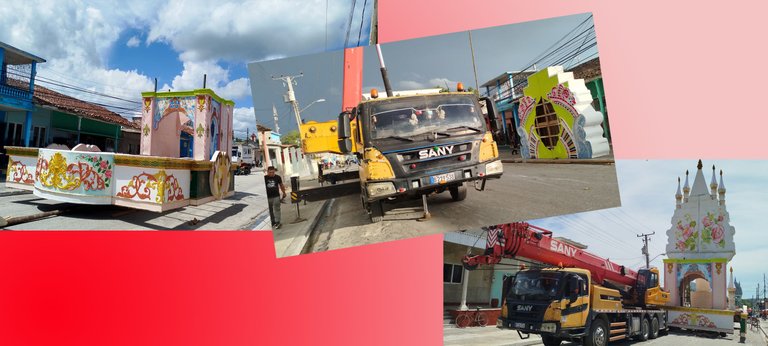
A las 10 de la noche llegó a la raya la carroza del barrio La Loma. Como estaba pactado, uno de los dos contendientes sale primero y hace su representación. El tema principal de la carroza era una fantasía sobre el amor. Una princesa de un lejano reino asiático llega a la corte francesa para desposarse con un príncipe galo. Las luces, el colorido, la música y los trajes de época recrearon el ambiente que nos transportó al momento representado.

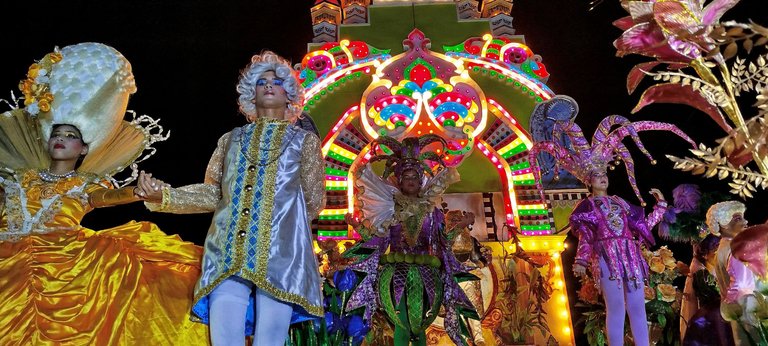
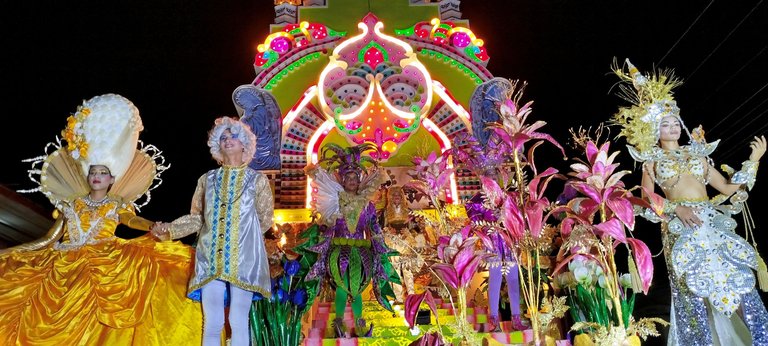
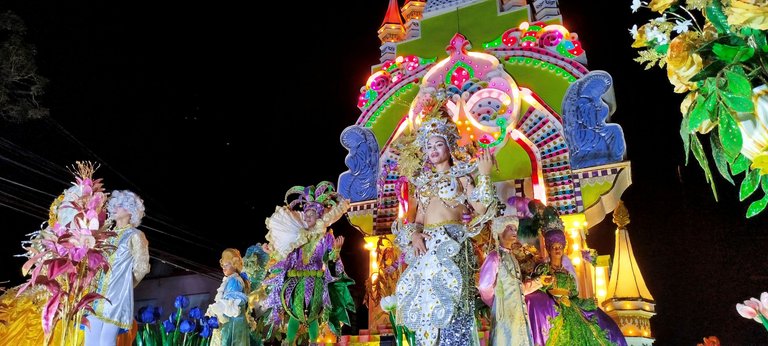
Barrio Sansaricq (el gavilán)
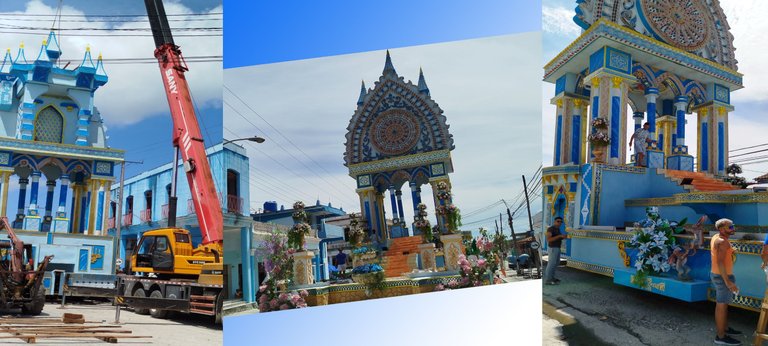
Por su parte, este año, el barrio de Sansaricq mostró en su carroza una versión del cuento La Bella y la Bestia. Aprovecho para señalar que las carrozas de las parrandas de barrios se diferencian de las que participan en los paseos de carnaval. Aquí los figurines, por lo general, se mantienen en un lugar, sin mucho movimiento, encarnando el personaje asignado. Es como una fotografía que muestra la esencia de la historia. Un locutor en off va narrando los detalles por la amplificación local.
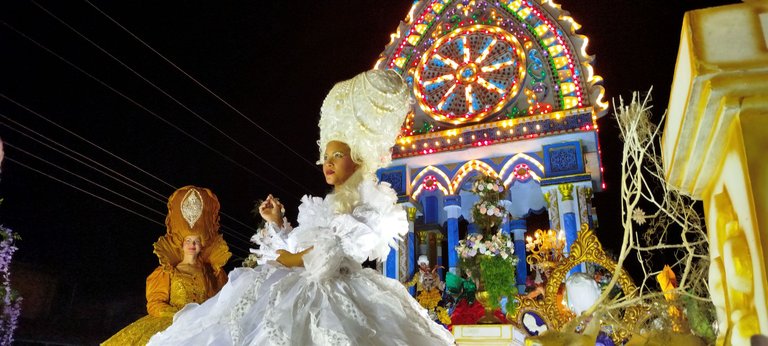

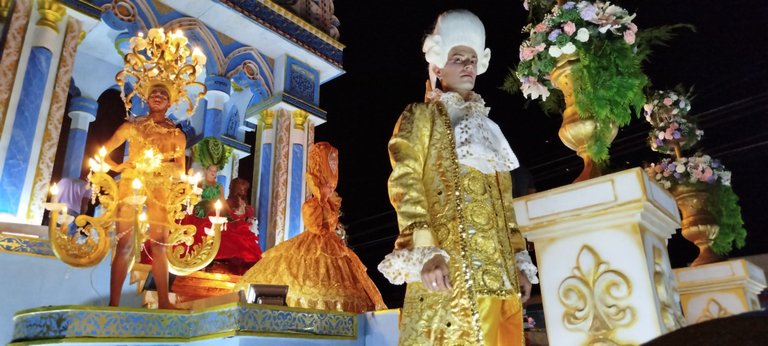
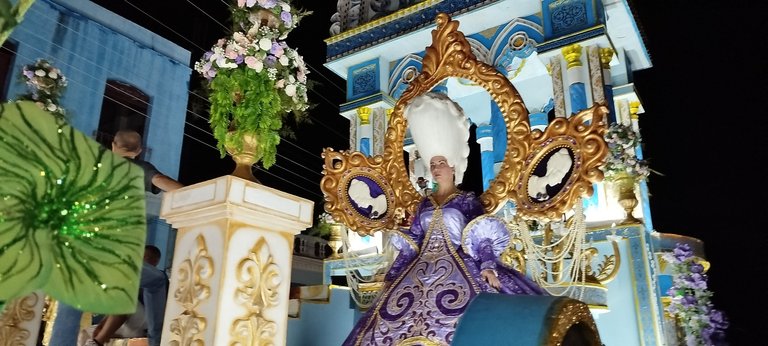
Estimados lectores, después de disfrutar de las parrandas en Yaguajay, y puesto que aquí no pudimos ponernos de acuerdo para definir quién se llevó el triunfo, apelo a su condición de jueces imparciales, para que me ayuden en la selección. Para ustedes, ¿cuál fue el barrio ganador, La Loma o Sansaricq? Con gusto leeré su opinión en los comentarios. Solo que no les garantizo que pueda convencer a mis coterráneos, de que, por esta vez, la victoria se la llevó el barrio contrario.

English Version
Parrandas de barrios - 200 years of tradition
The streets of Yaguajay were filled with drumbeats, the metallic sound of gangarrias and trumpets. The most enthusiastic joined in dancing behind the conga. The sky was filled with the lights of fireworks and the thunder of pyrotechnic explosions. One half of the town was dressed in red and the other in blue. The rooster and the sparrow hawk faced each other again. The parrandas de barrios, a celebration that is part of the cultural identity of this region of Cuba, returned.
A little bit of history
The parrandas de barrios are traditional celebrations in Cuba. Their roots are related to the Catholic religion brought by the Spaniards to the island. A priest came up with the idea of summoning some boys to go out into the streets of the village playing musical instruments and thus awaken the parishioners to attend the Midnight Mass. Its origin is located in the town of San Juan de los Remedios, place where until today, every year, on Christmas Eve, the celebration is held. The tradition was extended over time to neighboring towns located mainly in the north of the central region of Cuba.
The parrandas divide the towns into two neighborhoods that face each other in a competition where no winner is decreed, at least officially, because for the followers of each side, there is no doubt who the winner is. Such is the passion, that members of the same family can "break relations" for the duration of the festivities for being sympathizers of different sides. Each neighborhood, besides being identified by its name, is also distinguished by a color and a mascot (roosters vs. sparrow hawks, toads vs. goats, aura vs. pitirre).
It is competed in comparsas, congas, banners, square works, fireworks and of course the highlight of the festival: the floats. These are works of fantasy that recreate diverse themes related to stories and legends of any region of the world. Thus we can find a representation of the Arabian Nights, the splendor of the Roman Empire or the history of Montezuma. The theme and the elements that make up the floats are jealously guarded until the moment of the presentation.
On the day of the definition, the floats were assembled at a prudent distance from "la raya" - the imaginary line that divides the town into two neighborhoods. If one of the two neighborhoods is not ready at the agreed time for the presentation, its defeat is decreed ex officio. While that moment arrives, the atmosphere is enlivened with the music of congas, comparsas, lanterns, fireworks and the overflowing enthusiasm of the people. This is the only party that brings out of their homes all the people without distinction of ages.
The next day each neighborhood runs its triumph, buries the opposite and boasts the achievements that led to success. In the end the big winner is the people who enjoy the festivities and keep alive the traditions that identify them.
The parrandas de barrios, which already have two centuries of existence, were declared by UNESCO, in 2018, Intangible Heritage of Humanity. Although the official list includes 18 towns in the north-central region of Cuba, others also deserve to be included.
The roots of tradition
These days, after some years without being celebrated, the parrandas de barrios returned to Yaguajay, where I live. It is fair to point out that this town was among the first to make this popular tradition its own in Cuba. Here there were parranderos who took these festivities very seriously and they have remained in the memory of the people. But nowadays this festivity does not enjoy its former splendor in our town. The passion for the neighborhood has been lost in the new generations, something that constitutes the fuel that keeps the flame of the parranda alive.
I am not a native of Yaguajay. I was born in a small town in the municipality where the parranda was lived as the tradition indicates. Two years ago, after it was thought to be lost forever, it was taken up again by the determination of those who live there. I count myself among those surprised to see how a spark was enough to ignite the dormant enthusiasm in the hearts of the villagers. It was even more astonishing to see how the children and young people, who only knew about the festival by hearsay, took it on as their own. Undoubtedly the oral transmission of the elders had played its role. It is this spirit that I spoke of that sustains the love for the parranda de barrio.
My hometown is one of those that, deserving it, was not included in the list submitted to UNESCO. The years of inactivity, waiting for a state budget to finance it, took their toll at the time of exclusion. The current rebirth did not wait for official funding, it took up the popular passion to achieve the goal.
Parrandas Yaguajay 2024
But let's go back to the parrandas of Yaguajay, the reason for this publication, where the neighborhoods of Sansaricq and La Loma faced each other, the sparrow hawk against the rooster, the blues against the reds. Although this year's parrandas are not among the best, they have the merit of resuming the tradition and providing a healthy entertainment to the people.
Barrio La Loma (the rooster)
At 10 o'clock at night, the float from La Loma neighborhood arrived at the line. As agreed, one of the two contenders came out first and made his representation. The main theme of the float was a fantasy about love. A princess from a distant Asian kingdom arrives at the French court to marry a Gallic prince. The lights, the colorfulness, the music and the period costumes recreated the atmosphere that transported us to the moment represented.
Barrio Sansaricq (the sparrowhawk)
For its part, this year, the Sansaricq neighborhood showed on its float a version of the story Beauty and the Beast. I would like to take this opportunity to point out that the floats of the parrandas de barrios differ from those that participate in the carnival parades. Here the figurines, in general, stay in one place, without much movement, embodying the assigned character. It is like a photograph that shows the essence of the story. A voice-over announcer narrates the details through the local amplification.
Dear readers, after enjoying the parrandas in Yaguajay, and since we could not agree here on who won, I appeal to you as impartial judges to help me in the selection. For you, which was the winning neighborhood, La Loma or Sansaricq? I will gladly read your opinion in the comments. I just can't guarantee that I will be able to convince my fellow citizens that, this time, the victory went to the opposing neighborhood.

Escrito original en Español ✒️ Translated with DeepL.com (free version)
Imágenes propias 📸 Own pictures
Contenido original de ✏️ Original content by @leopard0

Y donde estan los Van Van e Irakere ahi?
Los Van Van e Irakere (de estos, al menos su música) podrás encontrarlos en unos carnavales (en los de La Habana o Santiago de Cuba, que son los más reconocidos). Su música ha hecho bailar a muchos.
Las parrandas de barrios, son una fiesta diferente. Las carrozas de carnaval se caracterizan por incorporar música bailable, al ritmo de la cual, bailan los que van en estas. En las parrandas la carroza muestran una historia y los que se suben son como actores que representan una escena (casi siempre estática) de dicha representación.
Eso no significa que no puedas escuchar la música de esas dos grandes orquestas ambientando las fiestas populares que son las parrandas de barrios.
Gracias por la lectura y el comentario. 👍
La música fundamental de las parrandas de barrios, está hecha por los miembros de cada bando, en congas que se organizan entre ellos. Este es el elemento que enlaza las celebraciones actuales con el origen de estas festividades.
Recuerdo a mi padre, en mi pueblo natal, siempre tocando en la conga de nuestro barrio en la época de las parrandas.
Genial. Se ve todo bonito y divertido. A gozar 😆😆👍
Gracias por pasar, es una fiesta realmente divertida y muy propia de nuestra región de Cuba. 🌷